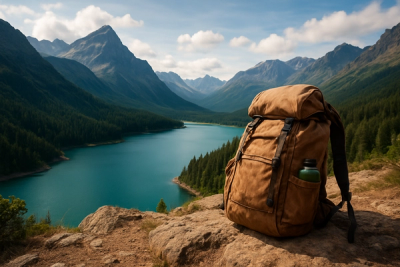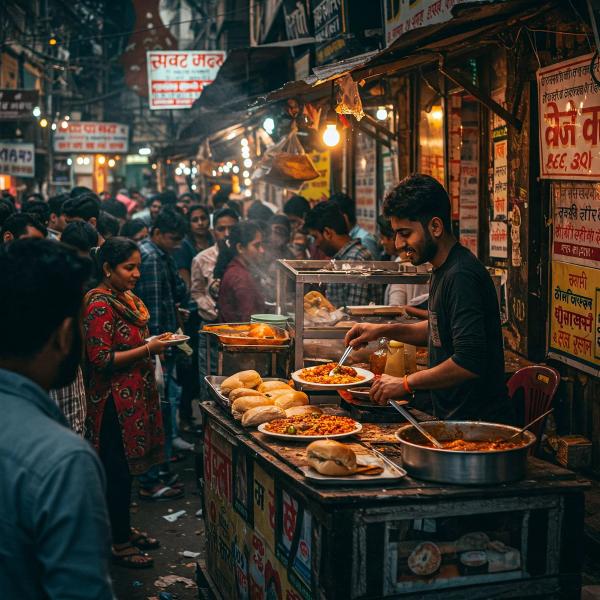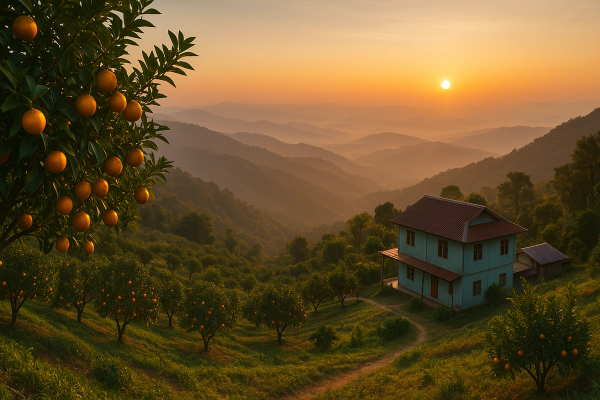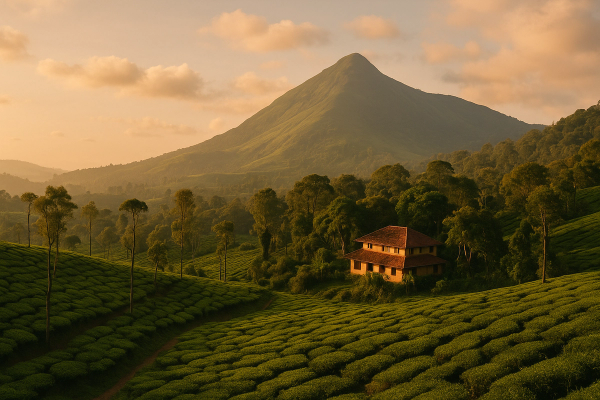Autism-Friendly Travel Destinations: Family-Safe Indian Spots – What Actually Worked For Us (2025 edition) #
So, um, first thing…I didn’t plan to write this as some top-10 perfect list, right, because nothing about traveling with a neurodivergent kid feels neat and tidy. We’ve been roaming India on-and-off for years, and in 2024/2025 we did this big lap with our son (8, autistic, sensory-seeking but also noise-avoidant… I know, contradictions, welcome to the club). I’m sharing the places that felt safe, gentle, kind, and still like, actually fun for all of us. Not the tourist circus. More the spots where we exhale and where nobody looks at you weird if your kid stims or needs to step out mid-queue. ¶
India in 2025 is buzzing with travelers again (thankfully) and honestly, the inclusive travel conversation is growing. I still had to explain autism more times than I can count, but, the amount of patience we got from staff at airports and hotels? Higher than any other trip we’ve done. And yes, there’s some logistics for visas, trains, and weather that I’ll explain—because getting blindsided by heatwaves or monsoon closures is not the vibe.¶
What “autism-friendly” meant for us (and might not be the same for you) #
We needed places with: calm mornings, predictable routines, minimal sudden loud noises, quiet corners, clean bathrooms (non-negotiable), and easy food options. Also, we steer clear of intense crowds and flashing lights. If there’s a sensory room, amazing—if not, we make our own with headphones, snacks, and a few basic rules like, "fifteen minutes then break". My son loves water and trees, hates honking and firecrackers, is okay with light music but not bassy thumps.¶
- Early mornings = magic. We did sunrise starts almost everywhere.
- Pick places with straightforward movement patterns—walk along a beach path, one direction forest trail, looped parks.
- Always identify a "safe corner"—library room, a quiet cafe, a shady bench, even hotel lobby near plants.
- Meal predictability: dosa, rice, plain grilled fish or veggies. Avoid high-spice if your kiddo’s sensitive.
- We pre-booked everything we could—trains, ferries, hotels—so we don’t got last-minute stress meltdowns.
Kerala Backwaters & Kochi Water Metro: slow boat, steady hearts #
We parked ourselves in Fort Kochi for five nights, which is basically a postcard village of leafy streets, cafes, and old Portuguese/Dutch buildings. It’s mellow, walkable, and—hello—lots of benches. My kid loved the big Chinese fishing nets because they move in this nice rhythmic up-down way and there’s no blaring speakers. We did one day out in the backwaters near Alleppey/Alappuzha, and—look—houseboats are romantic, but the engine whine can be bothersome. If your kid is noise sensitive, ask for an electric or solar-assisted boat, which in 2025 has become way more common thanks to Kerala’s sustainability push. The operators we used happily showed us the decibel levels. I know, I’m that parent.¶
We also rode the Kochi Water Metro—electric ferries connecting the islands—clean, organized, with clear signage in English. Morning rides were less crowded, and the hum of the boat is softer than you’d expect. Tickets are cheap (think under ₹200 per person for short hops), and staff let us board a touch early so my son could pick a window seat. Sensory win. Fort Kochi itself has like a thousand cafes, but we found quiet consistency at Cafe Papaya and a plain dosa at every other corner. A family room in a mid-range boutique hotel here is around ₹5,000–₹9,000 per night in 2025, high season spikes around December to early January. We booked via Booking.com and had zero issues adjusting our check-in when he needed to decompress.¶
South Goa (Agonda & Palolem): go early, nap midday, float at sunset #
Palolem and Agonda are the opposite of North Goa’s party zone. Mornings? Soft water, low chatter, lots of families and yogis, and you can literally watch dolphins sometimes. We stayed in a beachside cottage at Agonda—wooden floors, simple fan, quiet nights—and the staff got it. They helped us find the back-path to the beach so we avoided the scooter buzz. My son did his thing: building sand mounds and chasing tiny crabs, flapping happily. Zero side eyes.¶
Accommodations in South Goa in 2025 are still all over the map. You can snag clean mid-range cottages for ₹3,500–₹7,000/night in shoulder season (March-April, Oct-Nov), but around Christmas-New Year it can jump to ₹10,000–₹18,000 for beachfront. Family-friendly resorts like Taj Exotica in Benaulim are gorgeous, super professional, and they actually respond well to requests like quieter rooms or a quick check-in to avoid lobby overload (expect ₹20,000–₹45,000 per night in peak). Food-wise, we did plain grilled fish, rice, bananas (forever), and aamras when mango’s in season. Pro tip: Agonda mornings are quieter than Palolem; Palolem gets busier afternoons with boat touts, so keep noise-canceling headphones handy.¶
Kabini (Nagarhole) & Mysuru: green, gentle, predictable #
Kabini is our peace place. It’s on the edge of Nagarhole National Park, with mild boat rides and forest edges where you can actually hear birds. Safari jeeps can be bumpy and sometimes loud, but the lodges are used to families. Evolve Back Kabini is expensive but worth every rupee—on-site naturalists, calm paths, quiet set meals, and staff who didn’t bat an eye when we asked for a pre-plated dinner so my son wouldn’t get overwhelmed. In 2025, rates hit ₹25,000–₹45,000/night depending on season, but you can find simpler eco-lodges from ₹7,000–₹14,000. We booked safaris for early mornings when temperatures are kinder and crowds smaller. Keep expectations realistic: spotting tigers is not the goal, spotting each other’s smiles is.¶
Mysuru is an easy city for us. Compact, tree-lined, and the zoo opens early, which is a huge plus. We did the Mysuru Railway Museum (unexpectedly soothing—trains are stationary, and there’s a play area) and skipped loud light-and-sound shows at the Palace because he doesn’t like sudden booms. The city’s got Ginger Hotels and a few boutique stays with decent soundproofing around ₹3,000–₹6,000/night. Food? Idli heaven. We had soft idlis and ghee for breakfast practically everyday and no complaints.¶
Our Kabini routine (the one that actually worked) #
- Wake by 5:30am, quiet cuddle time. No phones, just the sound of the river.
- Short walk to the watch tower—10 minutes, then back.
- Breakfast at 7:30am, same table, same seat, same order. Predictability helped.
- Optional jeep safari at 6:30am or 3:30pm but only if he’s up for it. No forcing.
- Afternoon nap. Or just lying on the bed counting boats.
Pondicherry & Auroville: French vibes, leafy lanes, sensory-soft #
We parked in the French Quarter of Pondicherry for four nights and gosh the sidewalks, the mustard houses, bougainvillea whoosh—it felt like we could breathe. Morning walks along the promenade were slow and friendly, and we found a corner cafe where nobody was blasting music. My son practiced reading signs (in English and Tamil) and the staff cheered him on with the most chill energy. For meals, we kept it simple: baguette, butter, rice, roasted veggies. Prices in 2025 for family rooms hover around ₹4,000–₹8,000, with cute heritage hotels like Villa Shanti or Le Dupleix sometimes hitting ₹10,000–₹15,000 on weekends.¶
Auroville is like a big green sensory buffer. You don’t have to do tours or talk spiritual if you don’t want to, just walk shady paths and sit under trees. We did short visits to the Visitor’s Centre (ask staff for the quietest times—early morning), then found empty patches of grass for our "reset moment". The Matrimandir viewing area is a peaceful visual anchor—no loudspeakers, just hush. If your kid likes cycling, rent bikes inside Auroville where traffic is slower and kinder.¶
Meghalaya (Cherrapunji & around): living roots and cloud-soft days #
Meghalaya was a risk for us because steps can be endless and the rain can be a lot. But wow, we got days where clouds rolled like a blanket and the falls were low-noise mist. For families, do the living root bridges but avoid the mega-downhills if stairs are a trigger—double-check the number of steps at Nongriat in advance. We opted for shorter trails near Cherrapunji and quiet viewpoints like Mawkdok Dympep where there’s space to step away. Mornings again were gentler. In 2025, road conditions can still be rough after heavy rain, and landslides do happen in monsoon. We hired a local driver who understood we’d sometimes cut a day short if the kid needed a cocoon. Rooms range from ₹2,500–₹7,000 in homestays to ₹8,000–₹15,000 for nicer eco-stays. Food is straightforward—rice, roasted chicken, mild curries. Our kid liked watching clouds move more than any attraction. That’s enough.¶
Andaman Islands (Havelock/Swaraj Dweep): sands where time slows #
Havelock is a sensory balm if you do it right. We stayed near Radhanagar Beach, went at sunrise and late afternoon, avoided the midday heat. Waves are rhythmic and the beach is clean, with low plastic use thanks to strict local rules. Reef-safe sunscreen, hats, lots of water. Boat trips to Elephant Beach can be noisy, so we asked specifically for a quieter operator and sat at the front to minimize engine noise. Also did one glass-bottom boat ride—short, 20 minutes. Enough visual stimulation, nothing blasting through our ears.¶
Accommodation in 2025 swings wide: simple stays from ₹3,000–₹7,000/night, and resorts at ₹12,000–₹25,000 depending on proximity to the beach. Book in advance for winter season and school holidays. Ferries between Port Blair and Havelock are often full on weekends—book IRCTC or local ferry services early. Staff at our place brought breakfast to the room when the dining area got too buzzy. Little kindnesses go a long way.¶
Gangtok, Sikkim: pedestrian streets, permits, and patience #
Gangtok’s MG Road is pedestrian-only, which is such a gift. We parked ourselves at a small hotel just off MG Road so we could reach food and calm corners without navigating bikes. Evenings are lively but not aggressive—mostly families strolling, lights, soft music. We skipped loud tourist hubs and went for one cable car ride when it wasn’t crowded. Note in 2025: North Sikkim routes can open/close depending on weather and past flood damage, so don’t bank on high-altitude drives unless your kid is okay with long hours and winding roads. Foreigners still need permits for some areas, and Indian citizens require permits for spots like Nathu La. Your hotel can help with the paperwork; just factor in a day buffer so you don’t miss things if there’s a sudden closure.¶
What we wish we knew before Sikkim #
- Altitude can increase sensory irritability—hydrate more, slow the schedule.
- Cloudy days are soothing but damp clothing can be triggering—bring quick-dry everything.
- Keep a lightweight umbrella per person, not just one for the family. Trust me.
2025 India travel basics: visas, trains, and the whole airport thing #
Visas: In 2025, India’s e-Tourist Visa is active for a lot of nationalities (US, UK, EU, Australia, many others). You can usually choose 30-day, 1-year, or 5-year e-visa options—double-check your eligibility on the official portal and apply at least a week in advance. Passport should be valid for 6 months from arrival. If you’re coming from a yellow-fever risk country, carry the certificate. No routine COVID tests at the border now, but always check your home country’s return requirements because those can flip on you.¶
Airports: Most major airports—Delhi, Mumbai, Bengaluru, Chennai—offer special assistance for passengers with disabilities or unique needs. We requested meet-and-assist so we could move through security without the rush. It’s not always perfect, but we got early boarding and a quieter corner at gates more than once. Not all terminals have dedicated sensory rooms, so we improvise: we hang near the far end of the gate, behind a pillar, snacks at the ready. Ask for help. You won’t always recieve it, but you’ll get it more than you think.¶
Trains: Vande Bharat Express routes have expanded like crazy, and we rode two in 2025—smooth, fast, clear timing. Seats are comfy, but not silent… horns happen. Bring headphones. Book via IRCTC, try to pick window seats, and avoid rush hours. Sleepers on long trains can be chaotic for sensory-sensitive travelers unless you prep your compartment with curtains and a small white-noise machine.¶
Weather & safety in 2025: planning around the real world #
We faced two weather realities this year: heatwaves in North India (April–June can be brutal, especially Delhi, Rajasthan) and monsoon intensity along the Himalayas and the Northeast (June–September). If your kiddo’s sensory regulation goes haywire when they’re overheated, shift your timing—Kerala and the ghats are pleasant after monsoon, Goa is lovely from October to March, Andamans heavenly in winter. In the hills, landslides and road closures occur. Keep flexible dates and a Plan B. Also air pollution in Delhi in winter can be rough—carry masks if that’s a trigger. We use indoor air purifiers in hotels when possible. Not fancy, just practical.¶
What we actually paid in 2025 (because budgets matter and nobody likes surprises) #
Hotel pricing felt steadier this year but weekends swing big. Our mid-range stays in Kerala, Goa, Mysuru, Pondicherry averaged ₹4,000–₹9,000 per night for family rooms. Boutique resorts in wildlife areas ₹12,000–₹25,000, luxury ₹25,000–₹45,000. Clean homestays in the Northeast ₹2,500–₹7,000. Airbnbs in South Goa? ₹3,500–₹10,000 depending on beach walking distance and whether there’s a kitchen (we always prefer a kitchenette for snacks and calm meal prep). Availability spikes are school holidays and festivals—October, December, New Year, long weekends. Pre-book trains and ferries 2–4 weeks ahead if possible.¶
Food that didn’t fight us (and moments that did) #
We live on dosas and idli and banana and curd. Kerala’s fish curry is delicious but we go low-spice and ask for a plain grilled version to keep the sensory profile friendly. Goa’s thalis can be too much visually, so we order à la carte and plate simply. In Meghalaya we did boiled rice, chicken, and local veggies—he loved the texture of sticky rice actually. Pondicherry was bread and butter land. The one fail: a beach shack blasting trance at 2pm where me and him just stared at each other like nope, nope, nope. We left. You’re allowed to walk out. Always.¶
The win in India, for us, wasn’t ticking attractions. It was finding rhythms—same breakfast, same path, same bench—and letting the days expand around those tiny anchors.
Our calming toolkit (stuff we don’t travel without) #
- Noise-canceling headphones (charged, spare cable, we learned the hard way).
- Tiny snack box—bananas, plain biscuits, roasted peanuts if safe.
- Visual schedule cards—3 picture blocks for the day, nothing fancy.
- Cool towel and hat—heat can amplify everything.
- A tiny LED nightlight—hotel rooms are unfamiliar and dark can spike anxiety.
Tiny on-the-ground tips we swear by #
- Say the word "autism" and your kid’s needs clearly at check-in—I promise it helps.
- Ask for rooms away from elevators and staff service doors—less sudden noise.
- Sit near exits in restaurants so you can bail gracefully if needed.
- Choose morning ferries and trains—body temp and crowds are lower.
- When things go sideways (they will), take the L, find shade, breathe.
If I had to pick just five family-safe autism-friendly Indian spots for 2025 #
I know, lists… but if someone messaged me right now and said "we’ve got two weeks, where do we go?" I’d say: Fort Kochi & Alleppey backwaters for slow boats and leafy walks. South Goa (Agonda or Benaulim) for gentle beaches minus chaos. Kabini for green quiet and patient staff who understand families. Pondicherry & Auroville for sidewalks, shade, and choosing your own pace. Havelock in the Andamans for sunrise sand time and that big blue sigh.¶
We also really liked Gangtok for the pedestrian street and Meghalaya for cloud-soft days, but only if you’re cool with flexible plans and some rain math. Big cities like Mumbai and Delhi? Not no, but choose carefully—Sanjay Gandhi National Park in Mumbai at 7am with the cicadas is actually amazing, while Delhi’s Lodhi Gardens at dawn can be calm. Don’t write them off, just pick your windows.¶
Would we go back? Yup. We’re already planning round-two #
India’s taught us to travel by rhythm not checklist. 2025 felt like the year inclusive travel actually mattered to people on the ground—not everywhere, not perfect, but enough to make a difference. If you’re on the fence because it feels scary or complicated, I get that. Start with one week, pick a soft landing spot (Kerala or South Goa), keep the mornings sacred, and don’t push the big-ticket stuff. It’ll be imperfect and occasionally messy. And then you get a morning where your kid throws sand in the air and actually laughs at the wind and you’re like… OK. This is it. This is why we came.¶
If you want more stories and messy-but-real guides like this, I drop things over on AllBlogs.in now and then. Happy to answer questions there too—about visas or idlis or how many coconuts is too many coconuts (spoiler: three).¶














